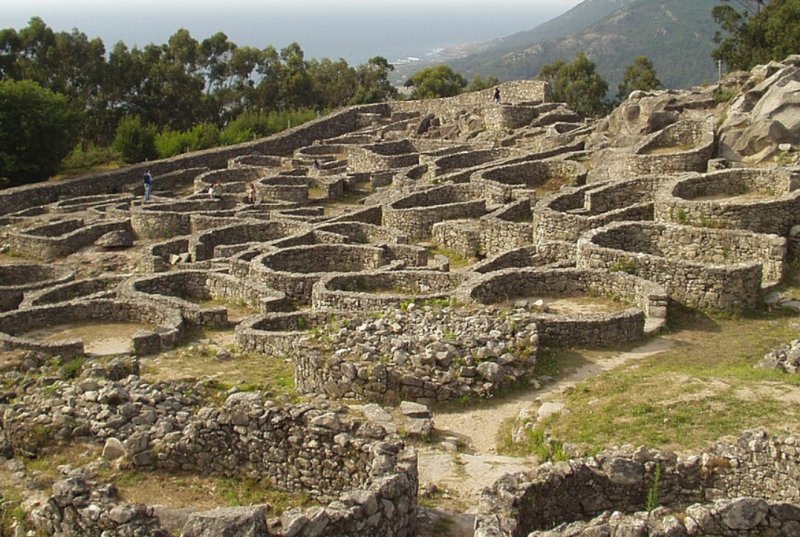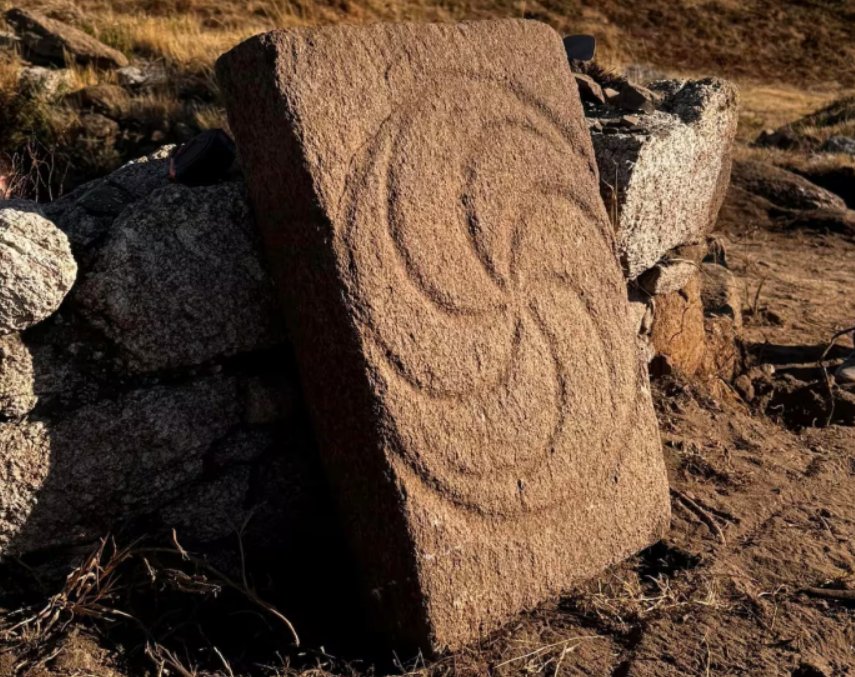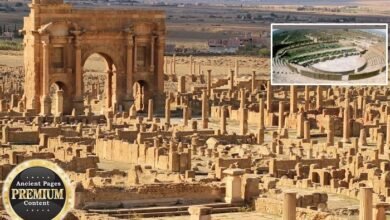Carved Symbols Related To The Galician Castro Culture Discovered At Castro de San Vicenzo, Orense, Spain

Conny Waters – AncientPages.com – Archaeologists have made a significant discovery at the archaeological site of Castro de San Vicenzo, situated in the Municipality of Avion in the province of Orense, Spain.
A partial view in Santa Tegra oppidum, A Guarda (Galicia)- Image credit: Henrique Pereira – CC BY-SA 3.0
The team found sculpted symbols related to the Galician Castro culture, and the discovery will shed much more light on the region’s ancient inhabitants and their life.
This culture was an Iron Age civilization (around 2,000 BC) in Galicia, Spain. It distinguished by its fortified hilltop settlements known as castros. It was considered an advanced society characterized by its practices in farming, metalworking, and warfare.
The advances recorded in the final stage of the Bronze Age made it possible for the communities in the northwest of the Peninsula to settle permanently in villages, which are called castros. From this arose a culture called castreña culture, which dates back to the year 600 BC and lasted until the 1st century AD.
“The forts are made up of a group of houses that are placed in a circular shape on high ground to facilitate defence. Around them, different activities were carried out to obtain food, such as agriculture, livestock, fishing and hunting. Inside, people dedicated themselves to the production of ceramics or textiles,” according to source.
These practices characterized the lifestyle of these people, the society’s structure and technological capabilities existing during that era.
Image source
Castro culture originated at the start of the first millennium BC in the northwestern areas of the Iberian Peninsula. These people constructed fortified settlements and hill fortresses, known as “castros.”
Beginning in the 2nd century BC, numerous castros evolved into semi-urban fortified cities, which were comparable in size to many Roman cities during that period.
As for a square stone discoverd by researchers, they features a symbol closely resembling the Rosa Camuna, which appears nearly a hundred times in Valcamonica, a large valley, located in the central Alps of Italy, which is renowned for its rich history and cultural significance. Valcamonica is particularly famous for its extensive collection of rock drawings, which provide valuable insights into the region’s past.
These settlements were not only places of defense but also centers of social, economic, and religious life.
Castro culture is known for its distinctive architecture, funerary rituals, and, in particular, its symbols, that can learn us more about the beliefs and practices of these ancient communities.
The archaeological team explored an area covering 140 square meters. Within this site, they discovered a rectangular stone block adorned with a spiral design, which is an evolution of a triscele inscribed within a circle.
Triskelion carved in the back of a stony chair, in a Galician Iron Age sculture. Museo arquelóxico provincial de Ourense. Image credit: Froaringus – CC BY-SA 4.0
This symbol features motifs radiating from a central point and dates back to the 4th and 3rd centuries BC. Another symbol engraved the stone features a “pedarosarosa” shaped petrele, known to be located in places like the Citania de Briteiros, a hilltop fortress located in the municipality of Guimaraes, Portugal.
Additionally, it can be found on the rocky wall of Monte das Ferraduras in Cerdedo, Spain.
Castro culture symbology, indicate possible connections to ritual practices and the cosmic worldview of its people. The form of these engraved slabs implies that they were likely positioned on the facade of a building, possibly serving as part of a temple structure, according to the archaeologists.
Written by Conny Waters – AncientPages.com Staff Writer








